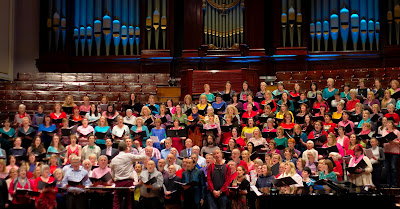It’s very easy for singers to stay in the same voice part in choir, even though it may not be the best place for them.

Lovemusic Community Choir by Patrick_Down is licensed under CC BY-NC 2.0.
Rather than assume you can’t sing that high (or low), why not put it to the test? You might be surprised.






